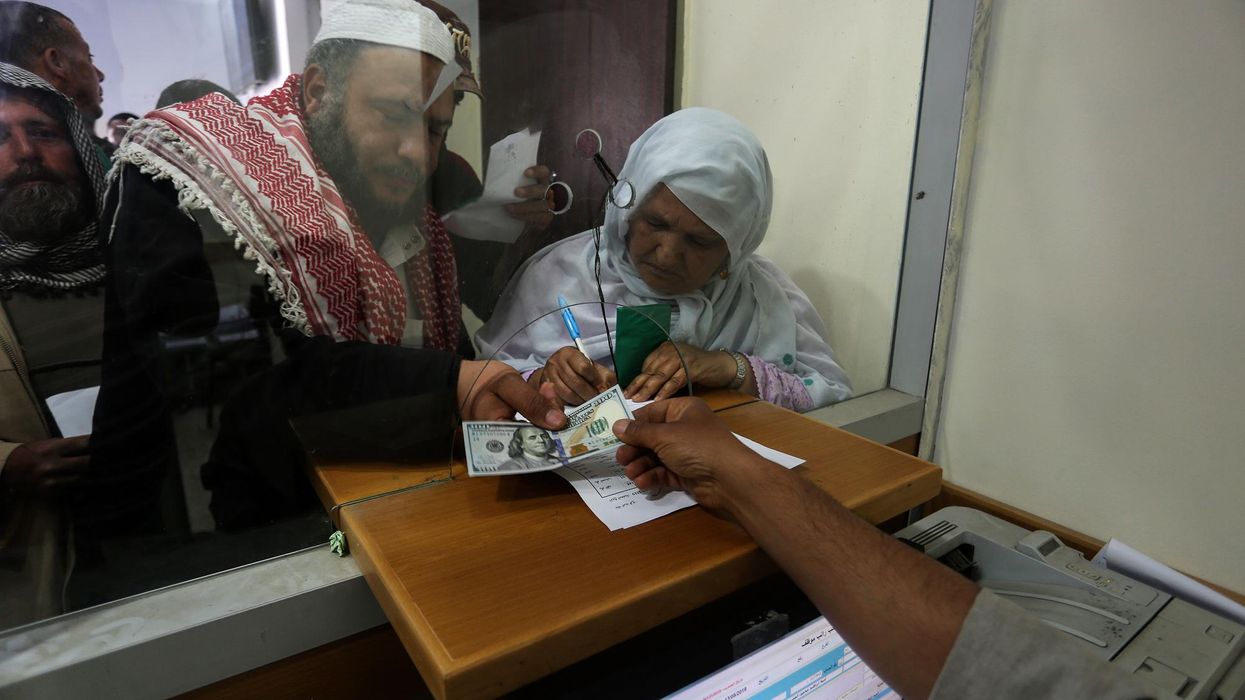As it weighs the nomination of Tulsi Gabbard for the position of Director of National Intelligence, the United States Senate faces a fundamental choice: Should it reject those like Gabbard who challenge conventional wisdom, or should it recognize that sensibly questioning orthodox views is essential to avoid the kinds of intelligence and foreign policy failures we have experienced in such places as Iraq, Libya, Afghanistan, and Ukraine?
The New York Times’ recent attack on Gabbard’s religious beliefs suggests that the foreign policy establishment is much more concerned about protecting its power than about the dangers of majoritarian intolerance that prompted the Bill of Rights. But disrespect for minority views and constitutional freedoms is exactly what most plagues our Intelligence Community (IC).
In fact, a form of groupthink has driven establishment approaches to national security for many years. It is rooted in three implicit assumptions.
Consensus Judgments are Correct Judgments. “The National Security Council’s consensus view tends to be the best, most informed judgment across… the U.S. government,” proclaimed NSC staffer Alexander Vindman while testifying in President Trump’s first impeachment trial over Ukraine in 2019.
He referred explicitly to this interagency consensus almost three dozen times in the course of his testimony, condemning Trump’s departures from it. This belief, that consensus views are most likely to be correct views, underpins the IC’s approach to analysis.
Using what the IC calls “coordination” to weed out basic errors is a sound approach to fact-checking, but it is not the best way to anticipate future discontinuities or overcome confirmation bias.
In fact, history is riddled with examples of consensus analytic judgments that proved false. Iraq had destroyed its stockpiles of weapons of mass destruction (WMD) well before Operation Iraqi Freedom. The so-called “Washington Consensus” on political and economic reform in 1990s-era Russia proved disastrous. Bringing China into the World Trade Organization did not produce a liberalizing middle class. Deposing Muammar Qaddafi failed to bring democracy and stability to Libya. Given this record, should Gabbard’s controversial warning that Assad’s removal might pave the way to radical Islamic rule in Syria be considered a disqualification?
The point is not that minority judgments are usually correct. It is that in many of these past examples, those who rightly questioned majority views did so at their personal and professional peril. If the IC is to improve its analytic record, it needs to promote rather than penalize diverse thinking and employ rigorous methodology to explain instances where objective analysts might reasonably offer alternatives to mainstream opinion.
Americans Can Trust the IC to Respect Civil Liberties. In 2013, Edward Snowden, employed at the time as a contractor by the National Security Agency, leaked reams of documents exposing highly classified intelligence programs that trampled on the privacy rights of American citizens. Some were horrified by the excesses revealed by the leaks. Many were outraged that Snowden had violated the law and put our nation’s security at risk. Both sides raised valid concerns.
Snowden was undoubtedly wrong to make himself the arbiter of whether classified information should be published, and his decision to defect to Russia only fueled questions about his motives and patriotism. But at the same time, the material he published highlighted the dangers of relying on the IC to police its own compliance with constitutional law and bureaucratic regulations.
His leaks also exposed the ways that new information technologies have eroded the wall that once separated foreign intelligence collection from America’s domestic affairs. This erosion has led to increasing IC involvement in electoral politics—rendering public judgments about what U.S. presidential candidates our adversaries prefer, for example—and to a growing role as arbiter of what constitutes “disinformation” in our public discourse. This has distorted important debates over such issues as Russiagate, the Hunter Biden laptop, and the origins and treatment of COVID-19.
Safeguarding democracy requires striking a reasonable balance on the spectrum between absolute security and absolute freedom. Left to its own devices, the IC will naturally prioritize security, because that is its primary responsibility.
That means that new intelligence collection technology must be carefully constrained within law and overseen by elected representatives of the people in both Congress and the executive branch. It also means that we need IC leaders who, like Gabbard, are sensitive to the dangers of IC overreach in its collection programs and public activities.
Empathizing With Rivals is Wrong. In the messy political scrum over acquiring and exercising power over foreign policy, Americans have too often confused analytic empathy with sympathy for the views and agendas of foreign adversaries. Hence the potency of Hillary Clinton’s accusation that Gabbard is a Russian “favorite” and the buzz from her skeptics that she harbors a disqualifying fondness for autocrats.
In fact, one of the most fundamental duties of any analyst of foreign affairs is to be able to walk in the shoes of adversaries and view U.S. actions from their perspective. That is not because their views are typically accurate and justified. Rather, it is because an inability to understand their perceptions and misperceptions greatly increases the likelihood of intelligence and policy failures.
Former Secretary of State Dean Acheson cited Washington’s misunderstanding of Japan’s perceptions as a central reason for the surprise over its attack on Pearl Harbor. Similarly, the WMD Commission highlighted a failure to grasp Saddam Hussein’s threat perceptions as a factor that led analysts to doubt he had destroyed Iraq’s stockpiles of WMD.
Securing a place for analytic empathy in the Intelligence Community is no easy task. In considering Gabbard, senators should ask themselves what combination of insight and political courage would have been required to dent the consensus views of the Iraq War and the intelligence used to justify it. They have a real-life example in the late Brent Scowcroft, whose warnings about the dangers of invading led to his expulsion from President Bush’s Foreign Intelligence Advisory Board.
A string of intelligence and foreign policy failures over the past several decades has undermined the trust of American people in the wisdom of Washington’s foreign policy establishment. In turn, its intrusive involvement in electoral politics has undermined the trust of Donald Trump and helped to elect him to a second term.
It is time to rebuild that trust. An establishment that zealously punishes dissenters and strictly polices public discourse is an establishment that is increasingly out of touch with the American people. And it is an establishment that is setting itself up for even more failures.
This article was republished with permission from The American Conservative
- Sen.Cotton on Tulsi: Don't 'impugn her patriotism or integrity' ›
- Tulsi Gabbard vs. the War Party ›
- Snowden, Snowden, Snowden! Tulsi grilled on little else | Responsible Statecraft ›
- Tulsi Gabbard confirmed as Trump’s Director of National Intelligence | Responsible Statecraft ›

















